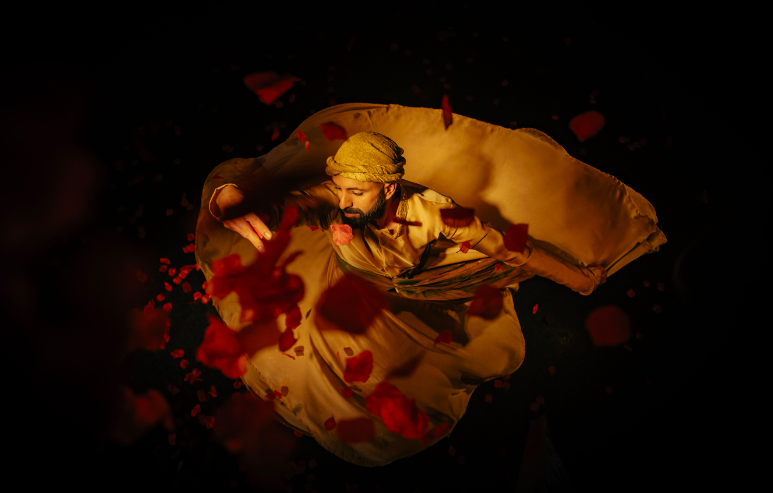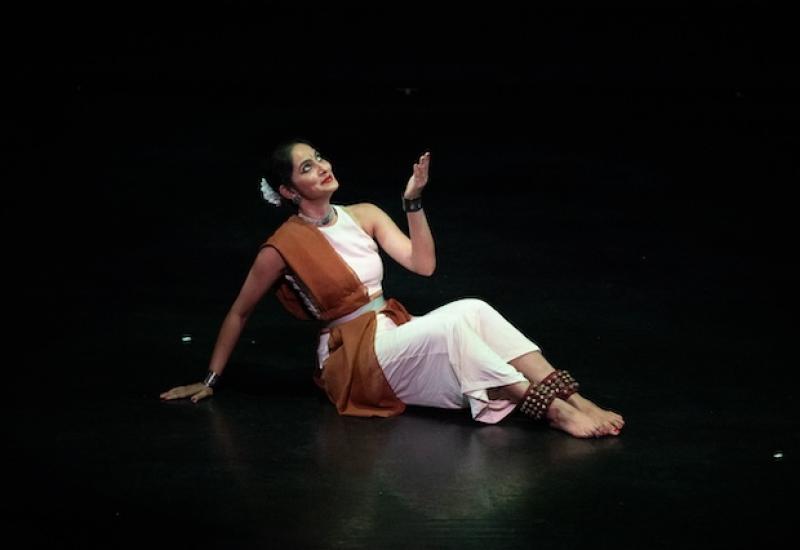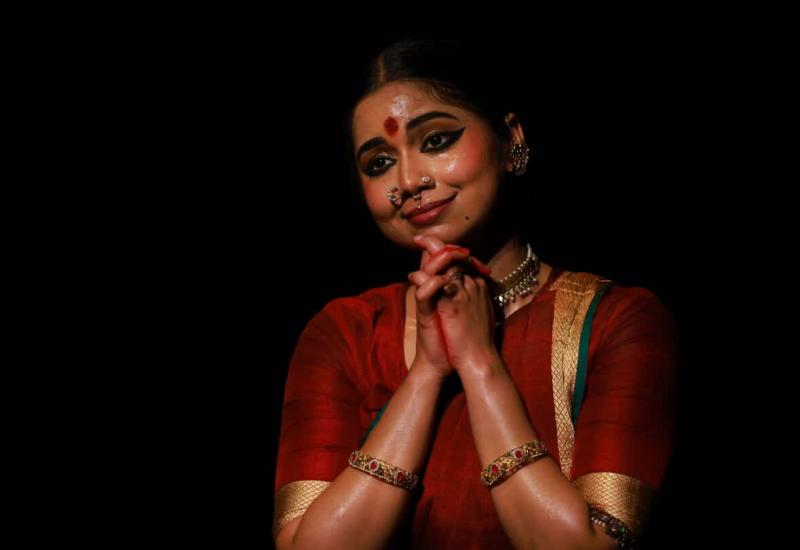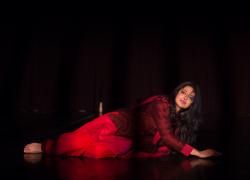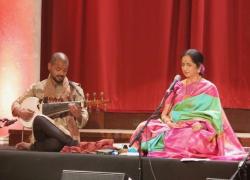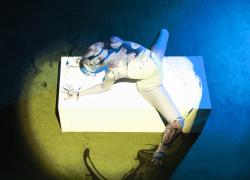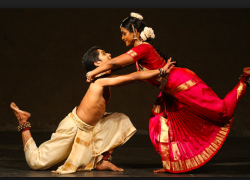Aakash Odedra Company, Songs of the Bulbul
Songs of the Bulbul
Aakash Odedra Company
Lyceum Theatre, Edinburgh
Reviewed by Donald Hutera on August 9, 2024
Photo: Kuldeep Goswami
Aakash Odedra's new solo has the distinction of being the only dance production to have its world premiere at this year's Edinburgh International Festival. It doesn't matter that there were only two others in the Festival's entire three weeks-and-a-bit programme. It's still quite a feather in the cap of this internationally-recognised, Leicester-based artist and his creative team.
And there is much to admire here. The 55-minute work was inspired by an ancient Sufi myth in which the bulbul, a passerine songbird, symbolises the beauty of the natural world. But that beauty is captured, caged and blinded before the highly vocal creature gives up the ghost in what might be construed as a metaphor for the often ephemeral life of a dancer, or indeed life itself.
Odedra inhabits the bird-spirit from birth to death, and the immediate aftermath. This relatively simple, emotionally delicate and potentially profound dramatic journey was choreographed by Rani Khanam, an experienced kathak performer also said to have orchestrated large-scale events involving thousands of dancers. This, by contrast, is a chamber-sized production in which every detail and moment counts. It falls to Odedra to realise the movement with expressively nuanced clarity. The role is a showcase for his skills, and a test of them. And does he pass it? My answer is an only slightly qualified yes.
Clad in red trousers beneath a billowing white robe, Odedra is a slight, quicksilver figure first seen gently struggling to free itself from the fabric as if from an egg. The fledgeling learns to fly, testing its wings. Odedra's spins are fleet rather than whip-like, his jumps properly airy. Could his dancing be sharper, more dynamically dazzling? Perhaps. But Odedra is, after all, embodying a smallish bird. He is also by nature a relatively soft virtuoso. In any case, his movement is enough to stir the plethora of red paper petals that are strewn centrestage and several times prettily replenished. In Emanuele Salamanca's semi-abstract set design the petals are balanced on one side by a few thin but towering branches (soon used to signify the bulbul's cage) and on the other by an irregular crescent of candle-like stumps (later 'played' gesturally by Odedra as if he's conducting off-the-cuff an orchestra of flickering light).
Another, more literal orchestra is on the soundtrack. Occasionally the majestic, rapturously cinematic sweep of Rushi Ranjan's score, recorded by the 35-strong Manchester Camerata, threatens to overshadow Odedra's performance. But he doesn't lose his way, instead riding the music and its plaintively melismatic vocals as is they were currents of wind. Fabiana Piccioli's radiant lighting underpins the dance's joyous tone until, that is, things take a dark, anguished turn. Caught, the bird doubles over, twirling, then reaches and rolls in enervating desperation. Odedra pins wing-like arms behind his back, strobe light underlining his panic. There is a simulated blinding, an alarming scream and then, after a passage of dance implying spiritual transcendence, a final and effectively smoky last breath.
Odedra's portrayal of the bulbul grows in feeling as it progresses. I was not, however, deeply gripped by a production which didn't particularly touch or transport me. Whatever the reasons were for my inability to see, and feel, beyond its surface attractions, it is a work of quality that I would consider revisiting.

